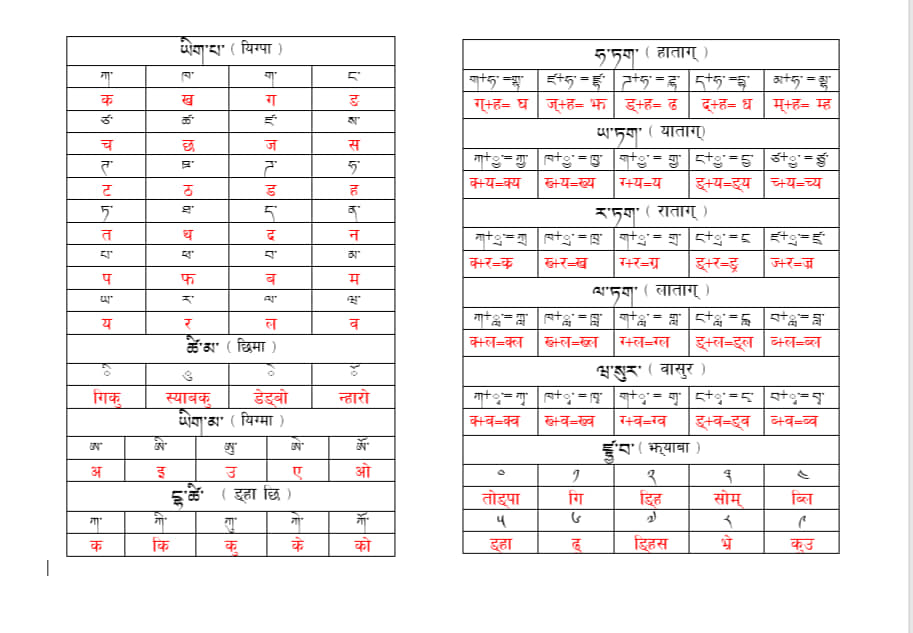A testimony to the rich cultural and language legacy of the Tamang people is Tamayik Lipi, frequently referred to as Tamyig script. The Tamang language, which is spoken by the Tamang people who live in Nepal and some regions of India, is written mainly in this native script.

Historical Roots and Development:
The origins of Tamayik Lipi can be traced back to ancient times, with its roots embedded in the Brahmi script, an ancient script used in India. Over centuries, the Tamang community developed their own distinct script, influenced by the Tibetan script, resulting in the creation of Tamayik Lipi. This script has evolved over time, reflecting the unique cultural and linguistic identity of the Tamang people.
Structure and Characteristics:
Tamayik Lipi is an abugida script, characterized by consonant characters representing both consonant and vowel sounds. The script features elegant, flowing strokes, with rounded shapes and distinctive curves. Vowel sounds are modified using diacritic marks placed above, below, or around the consonant characters, adding to the script’s aesthetic appeal.
Cultural Significance:
Tamayik Lipi holds immense cultural significance for the Tamang community, serving as a symbol of their identity and heritage. It is used for various purposes, including writing literary works, religious texts, folk songs, and traditional poems. Additionally, the script is employed in signage, decorative art, and community publications, further reinforcing its cultural importance.
Challenges and Revitalization Efforts:
In recent years, Tamayik Lipi has faced challenges due to the dominance of other scripts, such as Devanagari, in education, administration, and media. However, efforts are underway to revitalize and promote the use of the script among the younger generation. Various organizations, community leaders, and cultural activists have launched initiatives to teach the script in schools, develop educational materials, and raise awareness about its cultural significance.
Contemporary Usage and Future Prospects:
Despite the challenges, Tamayik Lipi continues to be used and cherished by the Tamang community. The introduction of the script in educational curricula, the publication of literary works, and the efforts of cultural preservation societies have contributed to its continued relevance. As technology advances, there are opportunities to digitize and disseminate Tamayik Lipi through digital platforms, ensuring its preservation for future generations.
Conclusion:
Tamayik Lipi stands as a vibrant symbol of the cultural resilience and linguistic diversity of the Tamang community. As efforts to preserve and promote the script continue, Tamayik Lipi remains an integral part of Tamang identity and heritage, embodying the rich tapestry of their cultural legacy for generations to come.

